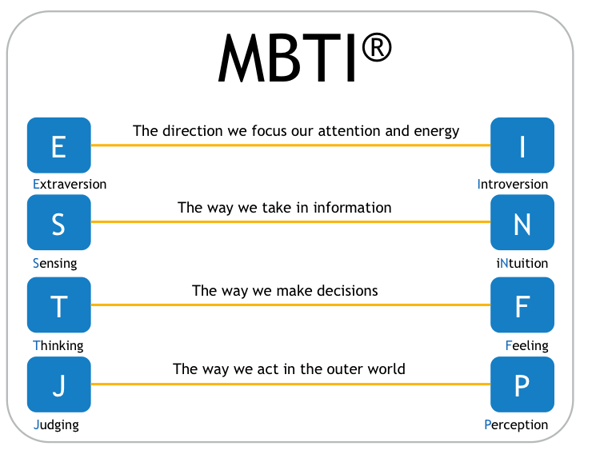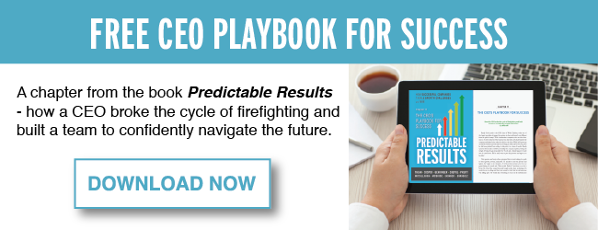Over twenty years ago I worked with one of the top pizza chains in the world. They had several  processes in place to manage growth, consistency, and training for managers. Even so, one district leader had atrocious store manager turnover. The company process seemed to be failing. As I investigated the cause, I discovered that this manager took shortcuts in training store managers by failing to take advantage of all corporate training offered. Corporate leadership immediately wanted to insist that he take advantage of all training. He did … for a while. But, soon he was back to his natural tendency to train you quick and then put you in your store with the expectation to succeed – sink or swim, on your own.
processes in place to manage growth, consistency, and training for managers. Even so, one district leader had atrocious store manager turnover. The company process seemed to be failing. As I investigated the cause, I discovered that this manager took shortcuts in training store managers by failing to take advantage of all corporate training offered. Corporate leadership immediately wanted to insist that he take advantage of all training. He did … for a while. But, soon he was back to his natural tendency to train you quick and then put you in your store with the expectation to succeed – sink or swim, on your own.
I later helped this leader reduce turnover by 18% on a year-over-year basis by helping him understand, accept, and then take advantage of his preference. He devised a way to hire people who could thrive in the environment that he had a tendency to create.
Since then, I’ve taken (and taught) many different assessments to help identify preferences. By understanding your own preferences, you can better understand how to work with them – resulting in more successful encounters with others in every area of your life. The Myers-Briggs Type Indicator (MBTI) is one assessment tool used in many Fortune 100 companies to increase self-awareness and situational awareness within teams and companies. I strongly encourage you to select and embrace a tool that makes sense to you and will help you with the people side of running your business.
For this discussion, I’ll use the MBTI to share some insights on how to leverage the most important asset you have, your people. In addition to using Rhythm, I believe your greatest success will come from understanding and developing your team.

The MBTI identifies four sets of opposites. A combination of eight ways in which people focus their attention, take in information, make decisions, and deal with the outer world. We each use all eight of these opposite preferences but have a tendency to prefer one element in each pair. These preferences are represented by letters and when the letters are combined, give you your four-letter MBTI personality type.
The MBTI is not intended to label or stereotype individuals according to the results of their report. Instead, the assessment relies on the user’s self-perception to generate rich, insightful clues about one’s personality. Keep in mind that the MBTI indicates preferences, not locked in character traits that you are powerless to change. You have the power to make choices outside your natural preferences no matter the situation.
1. Extroversion or Introversion
As an introduction to the MBTI, let’s look at the first pair of character traits shown in the picture above, the E for extroversion the I for introversion. This first set of letter pairs in the sequence is concerned with how you focus your attention and acquire energy from the world.
Consider two fictitious teammates: Emily and Ian. Emily has more of an E preference while Ian has more of an I. How do you think each likes to spend their free time over the weekend? Ian likes to spend some of that time alone to recharge his batteries. In other words, he focuses his energy inward (introversion). Emily is ready to go out and have a good time with friends. She gets energized by directing her energy outward (extroversion) and receives energy by being around other people. In a team environment, understanding what works for another person helps individuals to better appreciate their unique approaches to work and to life.
In Emily and Ian’s case, an honest recognition, and appreciation of their differences reduces frictions, strengthens their working relationship, and enhances mutual respect. Being aware of this information helps us to adjust as needed to situations and people around us. Remember, how you interact with others is a choice. To what extent are you willing to adjust your preferences to get the results that your team expects?
2. Sensing or iNtuition
The second letter set in the MBTI is S for sensing or N for iNtuition. These letters indicate how you prefer to take in and make sense of the information you receive. People with an S preference tend use their five senses when taking in information. They tend to focus on what is immediate, practical, and real. By contrast, people who have a higher N preference tend to take in information by seeing the big picture. They emphasize patterns and interrelationships – and often take it further by interpreting or adding meaning to the information. Let’s explore this by using something familiar to us all, a smartphone.
When asked to describe her smartphone, Sam who has a preference for sensing, might describe it like this: it's black, it’s smooth, there’s a glare on the screen, rounded corners, mine has a cool ring tone I downloaded. You’ll notice that Sam’s description is filtered through the five senses and focuses on the facts.
Nancy, a person with a preference for iNtuition, describes her smartphone like this: it’s an amazing device. I can call Singapore on it if I want to. I can access the Internet, download an app, and I can text my friends. It’s my connection to the kids when I’m away. Nancy’s response adds meaning to the device and focuses on the phone’s use.
3. Thinking or Feeling
The third letter in your MBTI is either T for thinking or F for feeling. These two letters give insight into how you prefer to make decisions. As you might presume, thinking is characterized as logical or rational, whereas feeling is focused on how decision and conclusions affect the individual's personal and social values. If your preference is thinking, you approach decision making in a decisive, logical way.
People with a preference for F, focus on the human aspect of decision making. They consider values and how others are being affected as a key part of the decision-making process. Both approaches are valuable and needed when working on a team.
Consider Tammy and Fred who both work at a manufacturing company. When deciding job priorities, Tammy, who has a preference for Thinking, may prioritize by first in first out, or most complicated to least complicated. Fred, with a preference for Feeling, may prioritize by which job is best suited for his team based on the skills and preferences of the team, or how long they’ve been working at their job, or by the type of work that might develop or challenge each individual. The balance of Thinking with Feeling allows the company to maintain focus on getting tasks done but in ways that take the team members into consideration.
4. Judging or Perceiving
The final two letter options for your MBTI result are J and P. Your preference indicates how you tend to interact with the outside world. J stands for judging (perhaps not in the way you think) and P stands for Perceiving (again, perhaps not as you think). People who prefer judging are quick to arrive at conclusions. Their goal is to determine what needs to be done and then move on. Their approach to any situation is typically organized, planned, and methodical. Those with a perceiving preference, appear to hold back a bit and are more likely to say something like, “hey, let’s see what unfolds when I get there” or “let’s let this play out.” People with a perceiving preference prefer to let things emerge instead of having it planned out ahead of time.
Consider Jamie and Paulina. Jamie is very task oriented and relies on her to-do list. She does not like waiting until the last minute to get work done. Instead, things are planned in advance and started early when possible. Jamie has a J preference. Paulina is on the Perceiving end of the spectrum, and she likes to keep her options open. She isn’t really a big planner since she likes to take a more flexible and spontaneous approach to things. Paula feels challenged and energized when meeting tight deadlines. Gaining self-awareness about our motivations, behavior, and the resultant impact on others allows us to be more thoughtful about the choices that we make – in both our words and actions.
When we learn about others' tendencies or preferences we build situational awareness and are better able to adjust our own behaviors in response to the situation at hand. In the end, this type of flexibility and adaptability makes us more effective leaders. Next time you order a pizza, remember the leader that, through an awareness of preferences, reduced his turnover by 18% year-over-year. Business is often a sink or swim proposition, and by identifying your team’s preferences you can make it profitable. Be sure to share examples below of how you’ve overcome people challenges and any assessment that you feel has been helpful to your business or career.
Photo Credit: iStock by Getty Images




